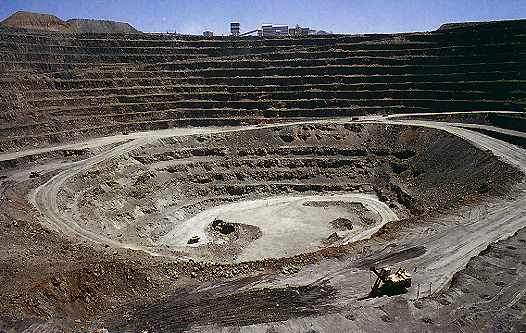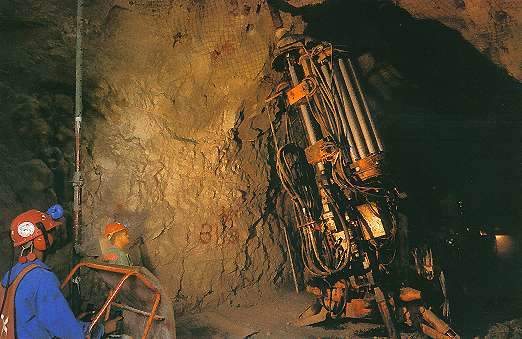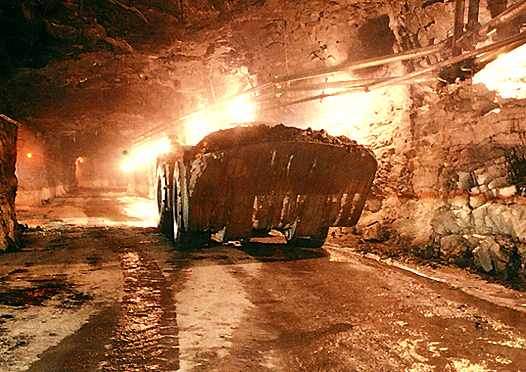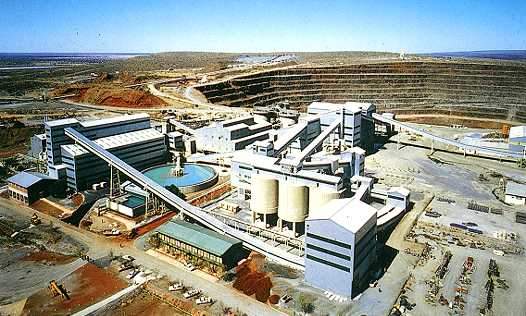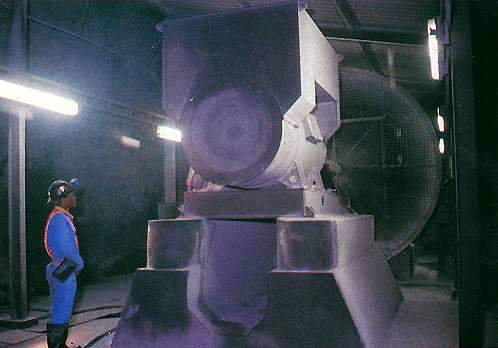The Finsch diamond mine is located near Lime Acres, 165km west of Kimberley in the Northern Cape province of South Africa.
Discovered in 1961 during exploration for asbestos, the deposit was first developed as an open pit. Since 1991, production has come from the underground mine beneath the old pit.
It was one of seven operations managed by De Beers Consolidated Mines (DBCM), formed in July 2004 as the wholly owned South African mining subsidiary of Luxembourg-based DB Investments / De Beers. This restructuring created a company that can be empowered under the terms of South Africa’s Mineral & Petroleum Resources Development Act.
In January 2011, De Beers sold the Finsch diamond mine to Petra Diamonds for $200m. The transfer of ownership was completed in September 2011. The stakeholding now stands as Petra Diamonds (74%), Petra Diamonds Employee Share Trust (5%) and Senakha Diamonds Investments (21%).
Petra increased the production to two million carats (Mct) of diamonds a year from 1.5Mct, by 2018. The increase in production was possible through tailings and underground production.
Geology and reserves of diamond mine near Kimberley
Finsch is a classic diamondiferous kimberlite pipe, which has a surface expression of around 17.9ha. The country rocks consist of banded ironstones overlying dolomites and limestones, the pipe itself consisting of weathered kimberlite (yellow ground) to a depth of around 100m with unweathered material (blue ground) beneath.
Reserves at Finsch are sufficient to maintain mining at current rates for a further 25 years. The probable reserves of the mine are estimated to be 35.7 million tons (Mt) containing 20.11Mct of diamonds.
Mining at Finsch diamond mine
The underground mine is accessed via a spiral decline from the surface to the 680m level and a 9m-diameter, 763m-deep shaft equipped with three automatic Koepe hoists and capable of handling 5Mt/y of ore. Underground development began in 1978 and the shaft was commissioned in 1982.
The upper levels of the underground mine use a sub-level open stoping system. The ore and waste are moved from the production levels via vertical ore passes that feed the material to the crushers. The ore is then transported by belt conveyor to the shaft systems for hoisting to the surface.
Production from the open-stope blocks 2 and 3 on the 430m and 510m levels below the surface was replaced by a block-caving system in block 4 on the 630m level that reached full production of 3.8Mtpa of ore between 2007 and 2011. This was depleted by 2015, with block 5 beneath following it into production in 2014. Stope development utilises ore passes raise-bored to a 2.9m diameter, then opened out to 6m diameter using a slipping rig that fits within the ore pass to drill the full profile. Semi-automated Tamrock drill rigs are used for drilling production rings in the open stopes. Rings consist of 102mm-diameter holes up to 45m long, through a full 360°. Dry drilling is used because of the weathering characteristics of the kimberlite.
Finsch makes use of specially developed, repumpable emulsion explosives, blended from components mixed underground and placed using dedicated transport and charging vehicles. The emulsion is sufficiently viscous to be pumped up 102mm vertical holes and to remain in position and is inert until primed during charging.
Benefits of this system include reduced carbon monoxide and nitrogen oxide emissions after blasting and reduced explosive usage in fewer holes per ring. Detonation is controlled from the blasting cubicle in the underground production centre, with precise timing achieved by individually programmed microchip detonators.
Load, haul and dump machines (LHDs) with a 12t capacity dump broken ore into Finsch’s eight ore passes, each of which has a capacity of 10,000t. MMD sizers reduce the kimberlite to 300mm for transport to the shafts and hoisting to surface. In November 2005, Finsch started using an automated ore-transport system underground, costing $18.5m to install.
Centred on a specially built, high-speed, high-strength concrete road, 630m below the surface, this marked a world-first for underground mining in relation to fully automated trucking.
Communications
Since 1988, Finsch has used an underground vehicle management and communication system.
This was upgraded in 1995 to an El-Equip MultiCom radio-controlled data transfer system based on leaky feeder technology. The system permits multichannel voice and data transmission.
The position of LHDs underground is monitored using Modular Mining Systems’ dispatch system, the controller on surface instructing the individual machines where to load and dump through the mine-wide communications network.
Diamond recovery at Finsch diamond mine
Run-of-mine ore is crushed and screened while –18mm and –3mm material is processed separately. Dense-medium separation is used for the coarser ore, while the fine material is processed through a pan plant and by high-intensity magnetic separation. The concentrates are retreated in cyclones to reduce the volume further, then combined and dried to form the feed for X-ray fluorescence sorting to recover the diamonds.
Tailings are passed over grease belts to retain any residual stones. Between February 2005 and September 2006, the engineering firm, Bateman, carried out a major upgrade of the technology, also increasing the feed rate to the plant to 900t/h.
To enhance the diamond recovery rate, an upgrade to the Finsch treatment plant was completed in July 2008. The $77.1m (R630m) upgrade has increased throughput capacity by 1.4Mtpa.

